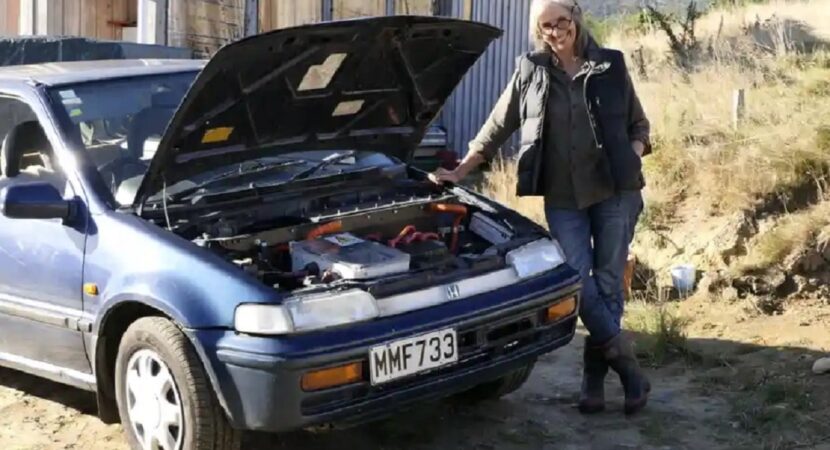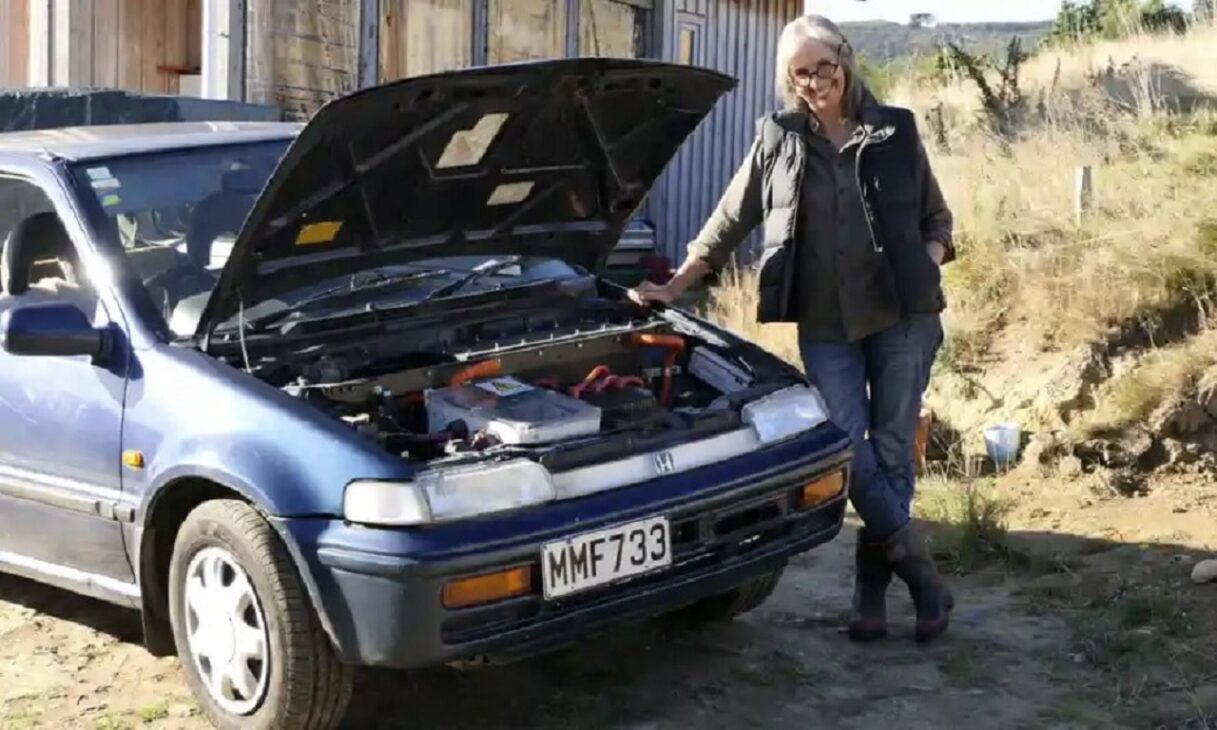
Businesswoman turns 1993 Honda City into an electric car capable of being recharged with solar panels. The vehicle offers a range of 120 km and saves R$500 per week.
Rosemary Penwarden, entrepreneur and environmental activist, turned her 1993 Honda City into a homemade electric car that recharges using solar panels. The project, including labor, cost approximately 24 New Zealand dollars, which in direct conversion is equivalent to something around R$ 74, which is half the cost of a Renault Kwid e-Tech, the cheapest electric car in Brazil.
Electric car powered by solar panels

Rosemary Penwarden says that while converting a car isn't possible for everyone, she wanted to illustrate the possibility. Photography: provided by Rosemary Penwarden - Image: The Guardian/Reproduction 
New Zealand woman Rosemary Penwarden in her homemade electric car, which is fully signed and guaranteed. Photography: provided by Rosemary Penwarden – Image: The Guardian/Reproduction
According to the activist, you have to be a little crazy to convert a vehicle in a homemade way. The businesswoman thanked the oil companies for their motivation and said that she has been driving her Honda City powered by battery and solar panels on the roads of the South Island, in New Zealand, for three years.
With the help of her engineer friend, Hagen Bruggemann, the activist worked for 8 months on the electric car project. The businesswoman bought the body of a tow truck and removed, on her own, the 1.3 liter gasoline engine from the Honda City.
In place of the engine, he put a new gearbox, a electric motor and a smorgasbord of batteries at the rear and front of the chassis. They were 24 batteries under the hood and 56 in the trunk and it is even possible to charge the electric car in your own home, which is completely powered by solar panels.
Bruggemann, an engineer who assisted Penwarden, says electrical conversion is not financially viable for people. Therefore, in the engineer's view, companies are taking the opportunity to convert pickup trucks and larger vehicles, bearing in mind that the bodywork tends to be worth much more than the electric motor.
Honda City 1993 electric has a range of 120 km
According to the businesswoman, the homemade electric car, which is recharged using solar panels, is similar in size to the Nissan Leaf of first generation. Called Frida, the Honda City has a range of 120 km on a single charge, which was enough for Penwarden to have dropped the possibility of using a combustion vehicle.
That's because he's already spent up to US$ 100 a week to go to work. Just being able to show that it can be done is an incredible thing and the most important thing, according to the activist, is to help stop one of the biggest polluters in the world as soon as possible.
Currently, Penwarden runs a cooperative known as The Valley Workshop, in Dunedin, southern New Zealand. The activist wanted her company to become the electric car conversion center in the country and claims that many vehicles have been converted, but it has not turned into the big thing she had in mind, however she says she will not give up.
Brazilian transforms Celta 2001 into an electric car
Tiago Slaga, an automation technician in Paraná, converted a Chevrolet Celta 2001 in electric car. Until then, everything was normal, however the big difference is that the model is now powered by notebook batteries.
According to the creator, the idea came after watching some similar conversion projects on the internet. Thus, he decided to start some bench tests and checked the possibility of feeding an industrial motor with batteries through a frequency inverter.
Currently, the owner has 455 notebook batteries and plans to expand to 500 units, equivalent to 3 cells for recharging.
Batteries guarantee Celta a range of up to 100 km on a single charge. The industrial engine can deliver up to 12,5 horsepower to the vehicle, and the batteries take about 10 hours to charge at a residential outlet.
Source: The Guardian














Air Force F-16 fighters…
True friend, what they shot down were…
Air Force F-16 fighters…
I would like to know what planet you live on…
Air Force F-16 fighters…
Well... It's flying scrap... Typical...
They discover the third largest deposit…
That’s why all foreigners and NGOs…
Air Force F-16 fighters…
Which genocide are you talking about? Than…
Now thinking about whether it would be worth changing my Toyota…
God bless you for giving many opportunities…
I have a 1986, I don't sell it excellent...
I would like to work in Switzerland, I am an engineer…
Do not capitalize on the Zionist genocides.
Good afternoon, Mr Rafaela, it’s a pleasure to meet you…
Fantastic
Sensationalist title. It says that new fuel is…